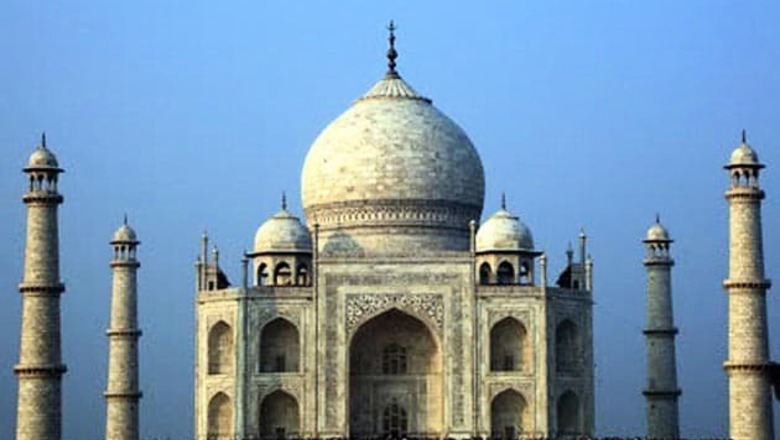
views
Even as the Taj Mahal appears sparkling white, washed by good rains over the past two months, and the rising water level kindling hopes of the Yamuna river regaining its lost vigour, Agra city presents a most dismal profile with pot-holed roads, heaps of garbage and choked sewer lines overflowing on to the roads.
"Is there a civic administration in this important tourist destination?" asked Australian tourist Derek who spent two days looking for the "real heritage of the grand Mughal metropolis", according to Amit Sisodia of Agra Beats, a group that organises special walks to the heart of the city.
A city visited by 10 million tourists annually cannot be allowed to remain glued to the dark ages, said Wake Up Agra president Shishir Bhagat. "The citizenry must rise and assert its rights. The politicians must respond with concrete action. Right now we have half a dozen bodies engaged in developing Agra, but lack of coordination and communication negates all that is planned to be done," Bhagat told IANS.
Ever since the Supreme Court got directly involved in Agra's development in 1993 as a fallout of rights activist MC Mehta's petition on pollution affecting the Taj, many government agencies have launched a variety of schemes and pumped in crores of rupees, but the net result is zero.
"Industrial development has stagnated, employment opportunities have been reduced, transparency and commitment in governance is unheard of, and accountability of politicians and bureaucrats is never enforced; the city is really directionless and rudderless," lamented Heritage Society president Surendra Sharma.
The city is in a shambles. "Right now, if you went around the interiors of the city, it would appear as if a war has just got over, the debris littered all over emitting foul and noxious gases," eco-activist Shravan Kumar Singh complained to IANS.
The waste from the petha-making industry and the use of coal despite the Supreme Court ban has added to the agony of the residents in the Kali Bari, Noori Darwaza, Hospital Road and other areas around the SN Medical College, said Devashish Bhattacharya, a doctor.
Huge craters and potholes have been created by the rains. The tourist vehicles get stuck and the visitors face a lot of inconvenience, said tourism industry leader Rajiv Tiwari, who wanted the city's entry points cleared of road blocks and encroachments.
Surely the city can present a much better profile and ambience to the visitors, as also to the residents of Agra, because government spending and funds have rarely been a problem, said Rakesh Chauhan, president of the Agra Hotels and Restaurants Association. The Agra Development Authority is flush with funds from the toll levied at historical monuments, he added.
DK Joshi, a member of the Supreme Court monitoring committee on water management and sewerage disposal in Agra, said: "More than a thousand crore rupees has been pumped in through various schemes to streamline and broadbase civic infrastructure but you hardly see any change in the conditions."
The Agra Municipal Corporation has around 4,000 sweepers against an estimated requirement of at least 6,000 after the mushrooming of many new colonies and the municipal boundaries being extended.
Waste disposal is another huge problem in the city. "The STP (sewage treatment plants) are not working, the landfill sites are already choked and there is hardly any space to dump the civic waste. The plant to treat the hospital wastes and hazardous stuff has not been functioning for one reason or the other. There is total negligence and callous attitude of the monitoring agencies, including the UP Pollution Control Board," activist Naresh Paras noted.
Except for the areas under the Agra Cantonment Board, the other parts of the city continue to remain a backwater by any standard, said senior journalist Rajiv Saxena.
"Such a pathetic collapse of the local bodies and the virtual autocracy of the officials who use politicians to their advantage were never witnessed before," Bankey Lal Maheshwari of the Sri Nathji Nishulk Jal Sewa told IANS.
In the coming years, a whole lot of mega projects are to be launched, including an international airport, a theme park, the Taj Ganj beautification project, Metro rail, Agra-Lucknow Expressway and IT and Leather Parks, but if the elected representatives and the officials heading various agencies do not communicate with each other and reach a consensus on the approach and strategy for development, Agra will continue to sink deeper into chaos, its citizens feel.




















Comments
0 comment